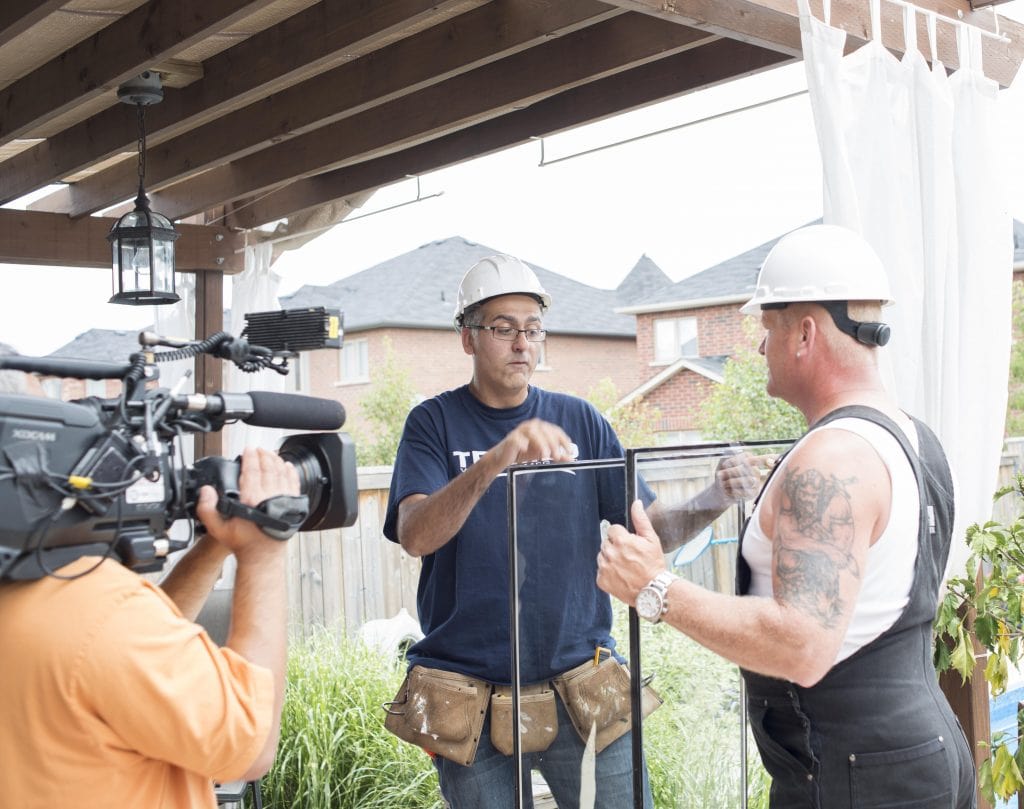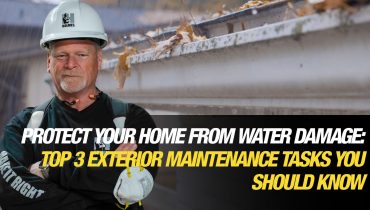Cleaning gutters is one of those chores most homeowners dread—and often put off—but it’s an essential part of protecting your home. Installing gutter guards can significantly cut down on...

Buying New Windows? 9 Things to Consider.
By Mike Holmes
Mike’s Advice / Home Renovation
Sunday, August 17th, 2025 @ 4:58pm
Buying New Windows – What You Need To Know
I get a lot of emails regarding windows, like how much should replacement windows cost and what type of windows to get and what should I look for when buying new windows? First of all you need to decide if you need a replacement or a repair.
Do You Need To Buy New Windows?
If you are noticing any of these issues, it’s time to look into a replacement:
- Rotten framing
- Wet or weeping windows
- Drafts coming in
New windows will give you smoother operation, lower maintenance, energy savings and less drafts. This is not a small project, so I do not recommend you install your own windows. Yes, a professional will charge a lot more, but this is a major investment.
Here is an article on signs you need new windows.
Here are some things to think about when buying new windows.
So How Much Should I Spend On New Windows?
Well, that depends on a number of things such as custom colours, double or triple glazed and so on. A typical 1,500 sg/ft with 10-15 windows could range from $15,000.00 – $20,000.00 and it goes up from there. Let me tell you this-the best quality is not necessarily going to be the most expensive. The best price is not the best window. I hear from a LOT of homeowners that their windows don’t even open. Poor installation or cheap materials is usually why. I have seen this in new home construction as well.
Here are the 9 things you should consider when purchasing windows:
#9 Color Choices

Choosing the right colour window frames can really make a big impact on your home.
Most manufacturers offer a wide variety of colours to choose from. No matter what colour you choose be sure to opt for windows that have the colour infused into the frame material.
#8 Work with an Experienced Installation Team

As seen on Holmes: Next Generation, choose an experienced company, like Trimbo Window Mfg Inc.
Hiring an experienced installer is similar to hiring a contractor. Make sure they are experienced in installing windows (at least 5 years of installation experience). Ask for references and get several estimates before you make your decision. And make sure the installation has some sort of warranty.
We have been trusting Trimbo Windows to manufacture and install our windows and doors for many, many years. Dom always makes it right on our job sites.
Pro Tip:
The process of changing out windows and doors isn’t for the average handyman. It can become complicated quickly, leaving many homeowners with a mess on their hands. The door and window frames need to be measured with precision. There may be more work involved in levelling the new installation. The right thickness of the window and door must also be used.
Any casing or framing will need to be reworked or added back in once the new installation is completed. There may be drywall work required– and don’t forget about painting! Almost all window and door replacement projects will need touch up painting – something that often gets overlooked when until after the installation. All these factors become more precarious with window and door installation for older homes.
#7 Manufacturer’s Warranty
Different than the installation warranty, also confirm the manufacturer’s warranty on the windows and make sure it’s a realistic one.
Warranties vary. Some have limited lifetime warranties while others may only cover non-glass components for 5 to 10 years or glass up to 20 years. Read the fine print, ask the right questions and understand what you are covered for and for how long.
#6 Retrofit or Full Frame Replacement?
There are two types of installation: retrofit and full frame replacement. Retrofit means that the window is replaced without removing the frame to install the window. The windows are measured to fit in an existing window opening and only the actual window is replaced. The existing window frames remain as is.
The biggest issue with retrofit is that they have a tendency to leak because it is often the frame or window opening that is the source of the leak.
Replacement windows are easy to install and usually do not require permits, so saves time.
Full frame replacement is my preferred method and is worth the extra money. Your installer will remove all the old materials including the frame and casement and make any necessary repairs.
RELATED
Window Replacement: 5 Signs You Signs Your Windows Need Replacing
#5 Window Model/Design To Consider
There are basically 5 different window designs: fixed, casement, awning, tilt & turn, hungs or sliders.
Fixed: These windows do not open and feature a large mid-section and two vertical side sections. They provide a sturdy frame with a panoramic view.
Casement: After fixed pane window, casement windows are the most energy-efficient as they have an airtight seal when closed.
Awning: Awning windows are hinged at the top and open outwards from the bottom, allowing ventilation and protection from the weather.
Tilt & Turn: Tilt and turn windows have a mechanical hinge that opens on two axes. The window can be opened, like a door or it can be opened on an angle – both ways allow for ventilation and easy cleaning.
Hung or Sliders: Hung windows (double and single hung) incorporate a slider design into a vertical window. The sash lock releases the upper (outside) sash that slides down or lower (inside) sash that slides up.

New casement windows and door were installed at a homeowner in season 3 of Holmes and Holmes
Tip: Picture windows are more energy efficient because they don’t open. However, casement windows offer better energy efficiency due to the strong seal on all four sides. Double and triple pane are gas filled which helps to increase insulation and energy efficiency. Triple pane is overkill, unless you are trying to block out noise.
RELATED
A home can lose major heat from drafts alone. Look for damaged caulking that needs to be replaced. Here are three ways to prevent heat loss in your home.
#4 Make Sure Windows are Certified
Most good quality windows meet standard certification – meaning they have been tested from an approved laboratory. Look for the ENERGY STAR label.
Also, check out the energy performance reviews from the National Fenestration Rating Council (NFRC) for the most efficient windows available.

Mike and Dominic discuss double paned windows on set.
#3 Energy Star Rating
Choose windows with an ENERGY STAR rating with the lowest U-Value possible or the highest energy rating possible. The homework is done for you. ENERGY STAR certified windows, doors and skylights have some (or all) of these features:
- Quality Frame Materials that reduce heat transfer and help insulate better
- Multiple Frames, such as two panes of glass with air or gas-filled space in the middle. Some Energy Star certified windows even have three or more panes for even better energy efficiency. And sound insulation!
- Low-E Glass. Special coatings reflect infrared light. This keeps heat inside during colder months, and cool outside in the summer. They also reflect UV light, which will protect your furniture from fading.
- Gas Filled can mean argon, krypton or other gases between the panes. These non-toxic gases will insulate better than regular air
RELATED
#2 Types of Glazing – Double or Triple Pane Windows?
Low E/Argon glazing is standard and helps reject UV rays while allowing in light. During the winter months heat loss is minimized and in the summer heat gain is reduced.
Double and triple glazed windows are filled with gas, either argon or krypton which provides insulation. Argon gas is a much better insulator than normal air. Argon gas can help improve window energy efficiency by 6%.

Double pane windows with argon gas can help improve window energy efficiency by 6%.
#1 Types of Window Materials When Buying
Windows come in a variety of materials: vinyl, aluminum, fiberglass, wood and hybrid.
- Vinyl windows are a very popular as they are durable, won’t warp or rot, like wood and are easy to clean. Vinyl windows come in a variety of sizes, colours and styles. However, you can’t paint or stain them.
- Aluminum windows last a long time but tend to be more expensive than vinyl. Aluminum is more durable and stronger than vinyl, which allows for large window construction. Aluminum also doesn’t degrade like vinyl. Advancement in product development has allowed aluminum windows to be just as energy-efficient as vinyl, with coatings and thermal breaks.
- Fiberglass windows are low-maintenance, and they won’t warp, crack or rust. Fiberglass windows are strong and because of that the frames can be thinner compared to vinyl window frames. Fiberglass windows can also mimic natural wood frames.
- Wood is still a great choice, especially for older more traditional homes but is a bit more expensive than vinyl. Wood windows are durable, come in a variety of colours, shapes, and sizes. They look beautiful and require minimal maintenance, are eco-friendly, energy-efficient and recyclable. However, they are more vulnerable to rot, termites, termites, cracking and warping due to heat and moisture.
MIKE’S TIP: Use a low expansion foam to insulate your windows and doors. Easily available at your local hardware stores. It is used for weather sealing and insulation of windows, doors, gaps, cracks and utilities perforations and pest blocker.
Why should you invest in GOOD quality windows?
Well, they will last 30 years if they are installed correctly. They protect against water intrusion. This doesn’t mean going with the most expensive option by the way.
My window expert Trimbo Window Mfg Inc. explains what makes a window good quality, and how some installers cut corners and use cheap hardware for install.
RELATED








